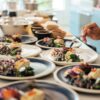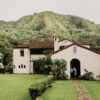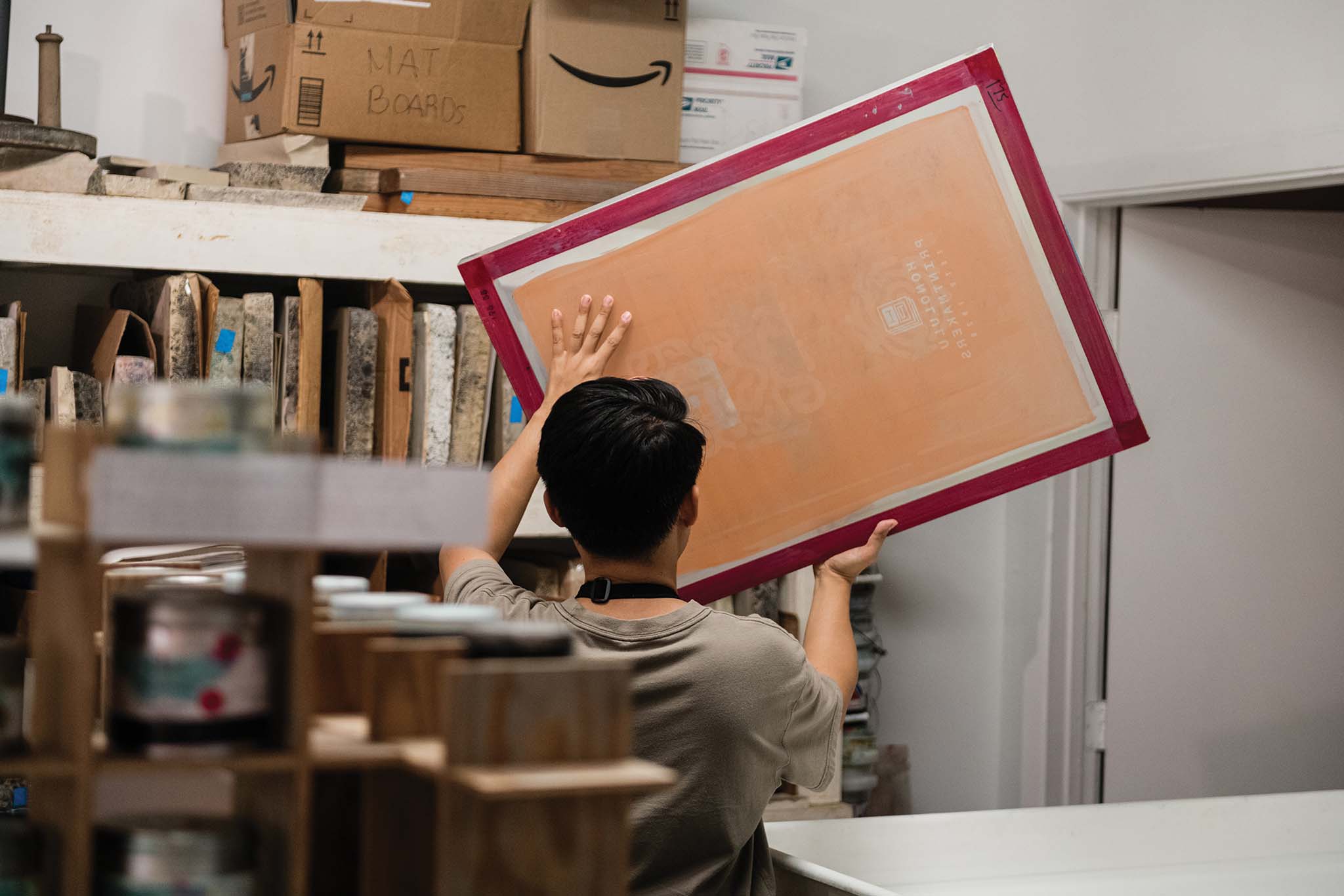Text by Kathleen Wong
Images by John Hook and Tommy Shih
Makerspaces emerged from the maker movement of the mid-’90s, when computer programmers and amateur hackers converged at communal spaces to exchange ideas and share tools. Over the decades, the movement grew beyond its tech-oriented beginnings to include makers of every métier, from hobbyists to savants. Makerspaces, too, evolved to encompass a wider breadth of disciplines. Today, makers can tap into a diverse ecosystem of fabrication laboratories, communal artist studios, and small business incubators.
No matter the niche, though, their founding ethos remains. They foster a democratic sense of creativity by circumventing the barriers, such as money and access, that traditionally gatekeep industries. With Hawai‘i’s high cost of living and finite real estate, the necessities to support one’s craft—a studio space, proper equipment—are out of reach for many local creatives. Thankfully, the islands’ creative minds can find their footing at Honolulu’s makerspaces, where “made for locals, by locals” takes on new meaning.
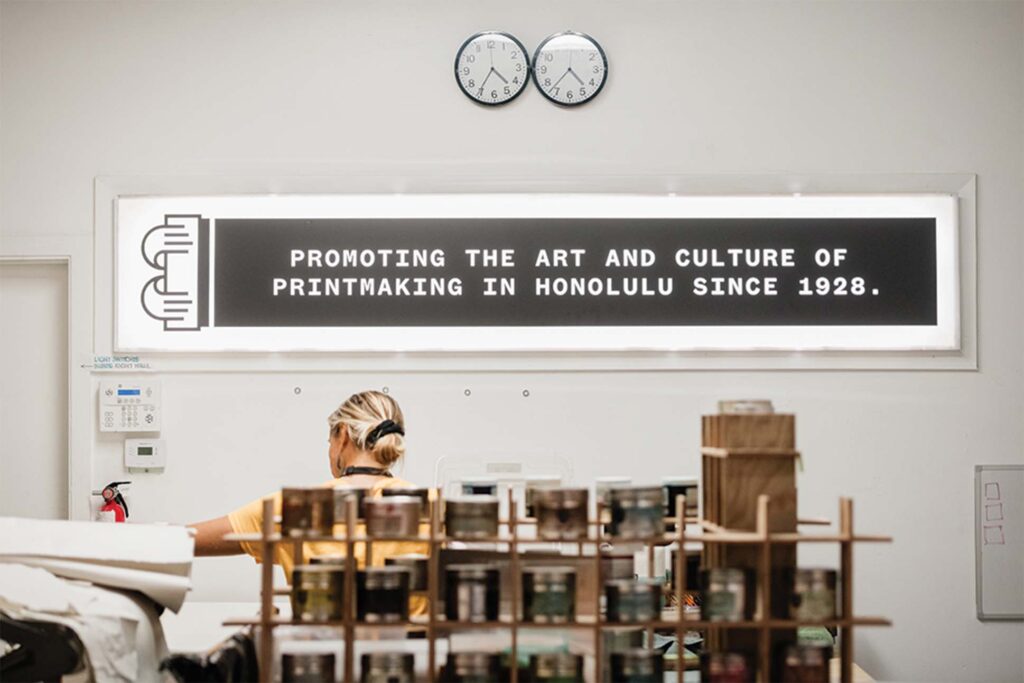
Ourspace
The concept for Ourspace came together over game night. During a round of a questions-based card game, the prompt “What can we build together?” spurred an earnest conversation between founder Darren “Dyo” Yomogida and his friends. The group lamented the closing of Oahu Makerspace, a cooperative craft studio that offered access to equipment too costly for most individual artists. When it shuttered in 2019, dozens of makers were suddenly without a means to create.
The loss was personal for Yomogida, a jeweler and watchmaker, as he knew the price of being an independent creative. “It’s hard to get stuff here,” Yomogida says, referencing the high cost of transporting materials to Hawai‘i.
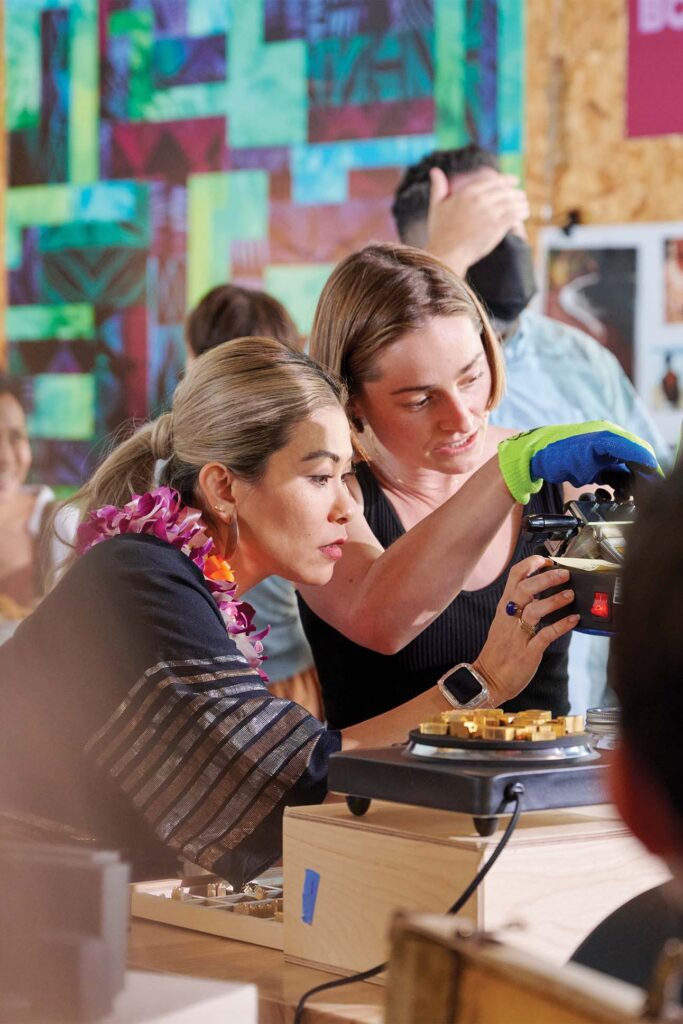
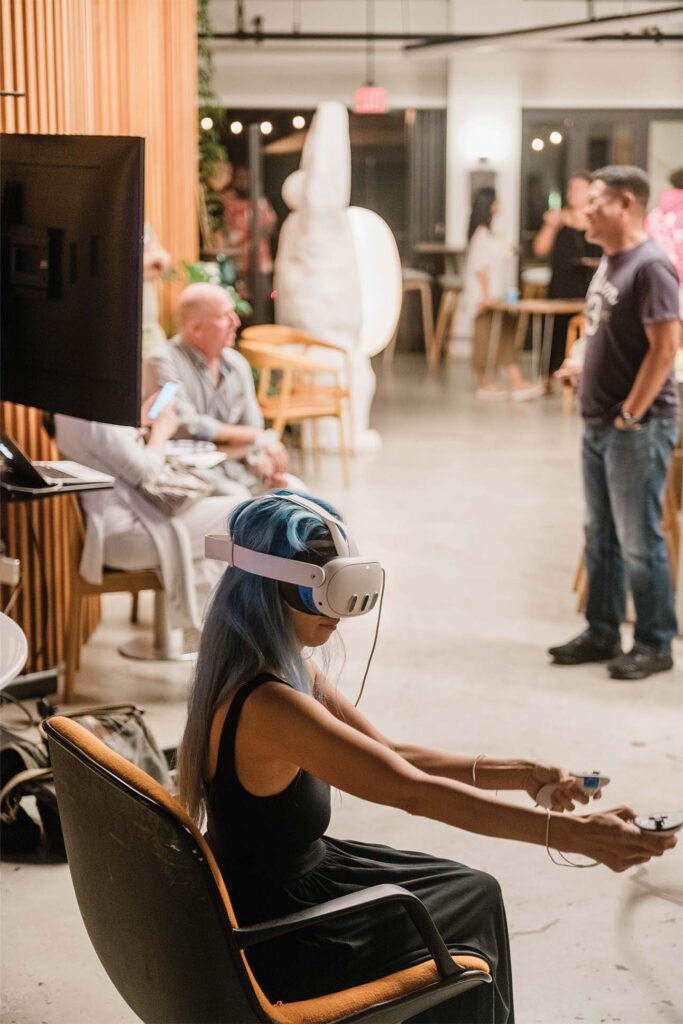
It’s a challenge that often prevents artists from staying in the islands, adds Nina Faye Lin, Ourspace’s interim executive director. “I think it makes people a little bit more scrappy, more resourceful, with what they’re making and how they’re making it,” she says. “Or it causes them to move away.”
Launched in 2023 by Yomogida, Lin, and a crew of professional creatives, the nonprofit Ourspace—Hawaiʻi’s first hybrid production and incubation studio—takes the traditional makerspace model and retools it for Hawaiʻi’s community of small businesses and burgeoning artists. Here, makers have access to a host of machinery and equipment on which they can experiment with product design and branding, without the cost of outsourcing production: a desktop CNC mill for 3D printing prototypes, laser cutters and engravers to design product branding, a large plotter and wide-format printer for art prints and wall vinyls. (Ourspace regularly supplies wall vinyls for art exhibitions at Kaio Space in Chinatown; merchandise for CreativeMornings Honolulu, a monthly breakfast series for the creative community; and signage for local design studio Marlowe Furnishings.)
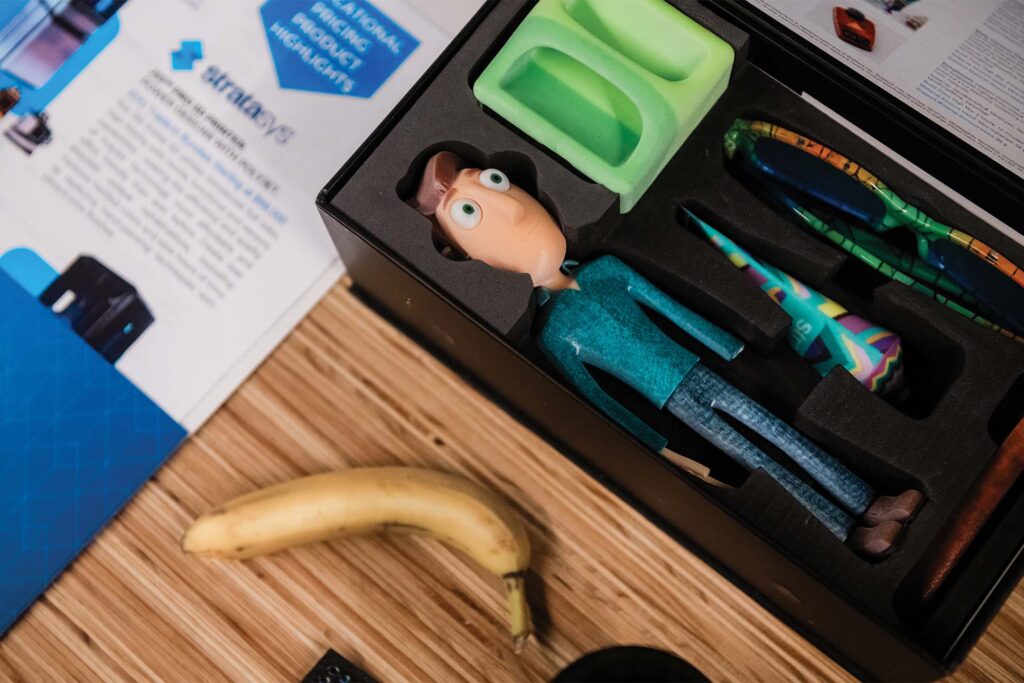
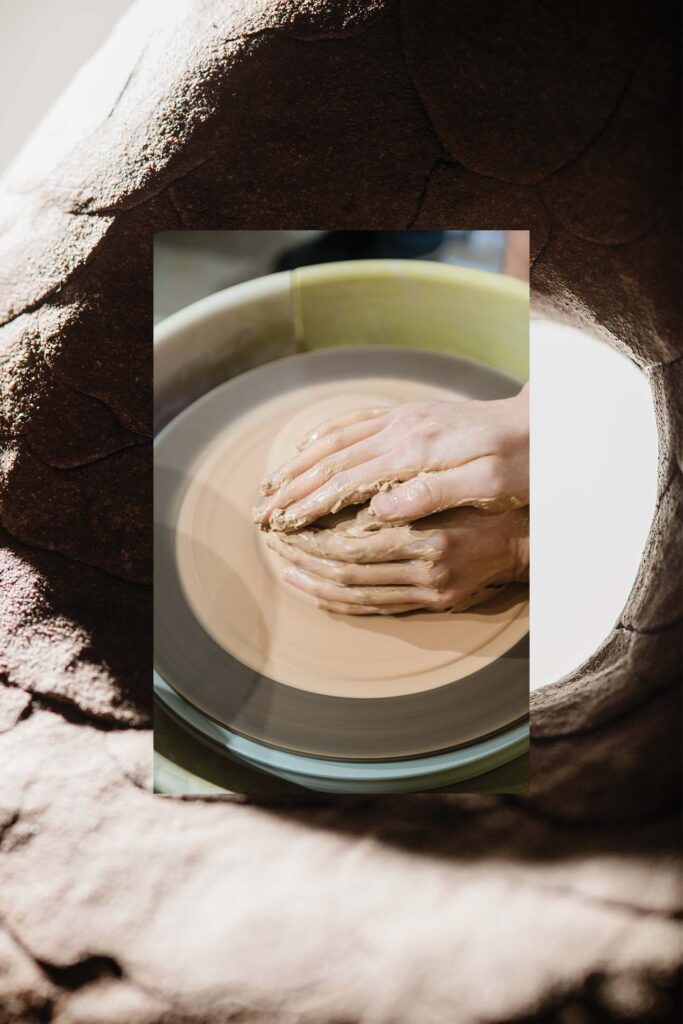
To empower makers with a DIY sensibility, the nonprofit also offers one-on-one training on its production software and equipment. Community manager Lauren Hana Chai, an artist who originally came to Ourspace as a client in need of art prints and stickers, is now helping to further shape this community-oriented approach, which includes a creative exchange program aimed at increasing access for creatives across income levels, allowing makers to offer skills and services in exchange for use of the space.
In 2023, Ourspace left its temporary site in Kakaʻako’s Entrepreneurs Sandbox in search of a permanent and more spacious venue, where it will expand its services to include a photo studio and individual workspaces. For now, Yomogida stores some of the machines in his studio at Fishcake, bringing members together and publicizing Ourspace’s services through workshops and events around town.
Fishcake
Maura Fujihira and Akemi Rogers first opened Fishcake as a furniture showroom and gallery in 2007, gradually expanding it into a platform for creatives ranging from makers of home decor and jewelry to tattoo artists and hair stylists. “We always had the art components because we really like working with local artists and incorporating art into any living space,” Fujihira says. “Living with art in parentheses.”
In keeping with this ethos, Fishcake has evolved beyond its retail origins in recent years, starting with the culinary incubator space Fishcafé. The idea took shape post-pandemic, when former tenant BoxJelly and its accompanying café, Try Coffee, moved to their own location. Seeing its potential, Fujihira chose to continue operating the café on site and expand it into a test kitchen for micro food businesses.
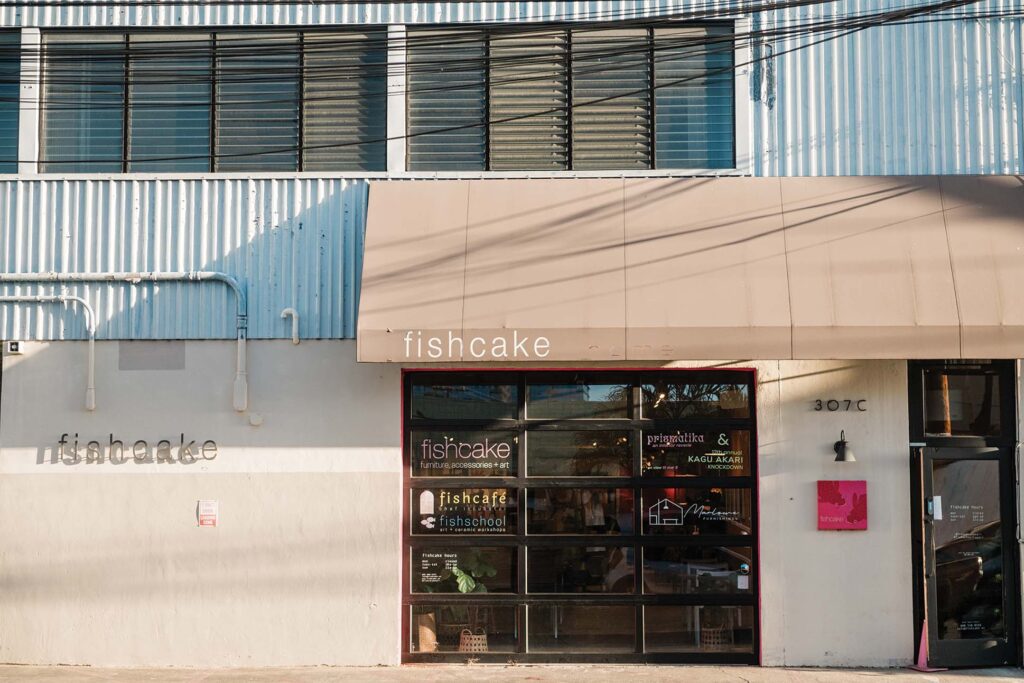
Fishcafé’s rotating cast of chefs and bakers run the gamut of goods in Hawaiʻi’s foodie scene, from vegan sushi by Honobono to upscale local cuisine from C4 Table. Here, maverick restaurateurs are afforded a testing ground for dishes and a low-cost way to build clientele. The concept has proven successful for many a Fishcafé maker: Bread Service, a small-batch artisanal bakery that began vending at Fishcafé in early 2024, now sells out of several pop-up locations, including Try Coffee at Ward and Howzit Brewing in Kakaʻako.
At the other end of the Fishcake showroom is Fishschool, an art and craft education space and ceramic studio led by creatives. In 2020, Fishcake was donated a kiln by its neighbor, designer Andrew Mau. Ceramicist Jun Funahashi began teaching ceramics courses in the space and enlisted fellow artist Dane Nakama to offer instruction in drawing and painting. Studio director Joy Sanchez recalls that in Fishschool’s infancy, its teaching space was just a room with plastic tables and tiny buckets of glaze, hosting classes just three times a month. Now, Fishschool has 30 teachers on its roster who lead up to 15 classes a month. The studio is also home to independent ceramicists who take advantage of Fishschool’s kiln and pottery wheel.
In true makerspace fashion, members are encouraged to work alongside each other. “I see it as a community space more than an education space,” Sanchez says. “I want people to know that they can come here, and it’s safe to mess up, to learn.”
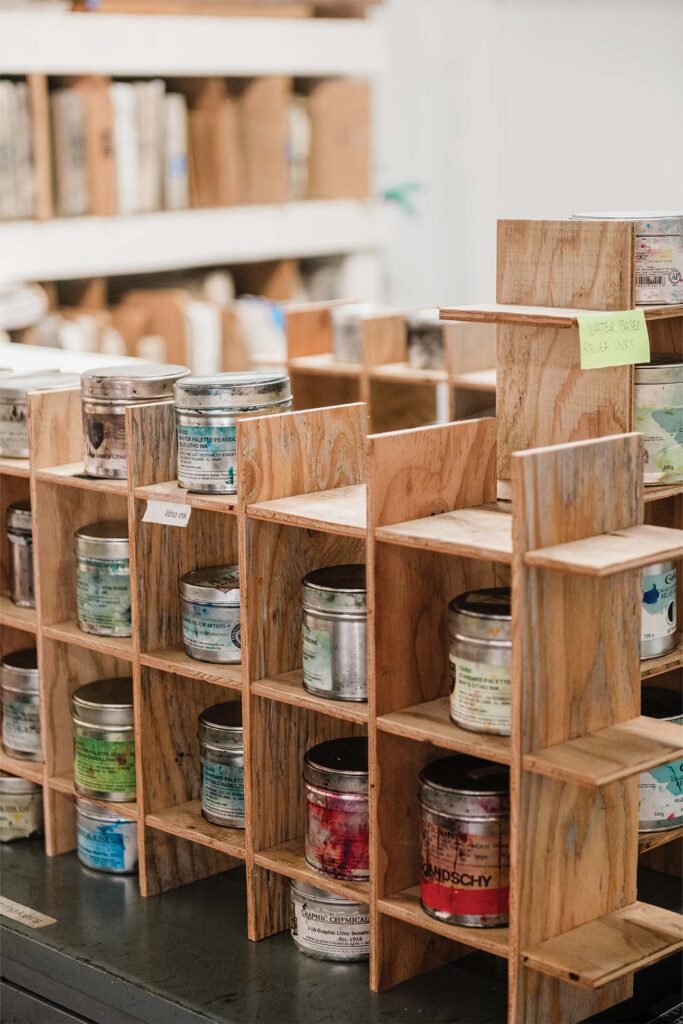
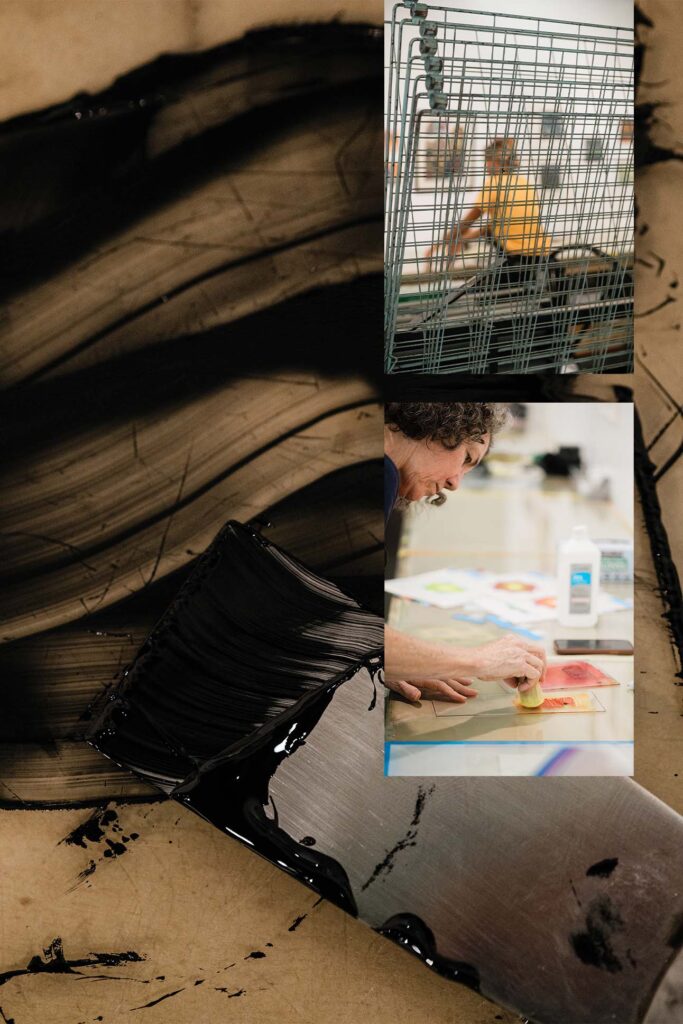
Honolulu Printmakers
Operating out of an unassuming space in Chinatown is Honolulu Printmakers, one of the oldest community print shops in the country. For nearly a century, the organization has nurtured a community of emerging and seasoned creatives, including some of Hawai‘i’s most notable artists. Its founding members include former Honolulu Museum of Art director John Kelly and French muralist Jean Charlot, and artists Pegge Hopper and Masami Teraoka are among its long-time supporters. “We’re deeply enmeshed in the community in a very significant way for lots of people, not just the printmaking artists, which is a very niche community,” says executive director Denise Karabinus.
The studio’s lithography machine, screen printing equipment, and three large etching presses—steel behemoths weighing approximately 2,000 pounds—service a yearly membership of 140 printmakers. On any given day, you’ll see a handful of printmakers perfecting their etchings or searching for the perfect shade of ink. The studio is entirely self-run by its members. “Especially in the small spaces we all live in, nobody can really afford—or has the space for—a printmaking press,” Karabinus says. “It’s like joining a gym, but for artists. You come in and you find all these people there who are ready to encourage you and support you.”
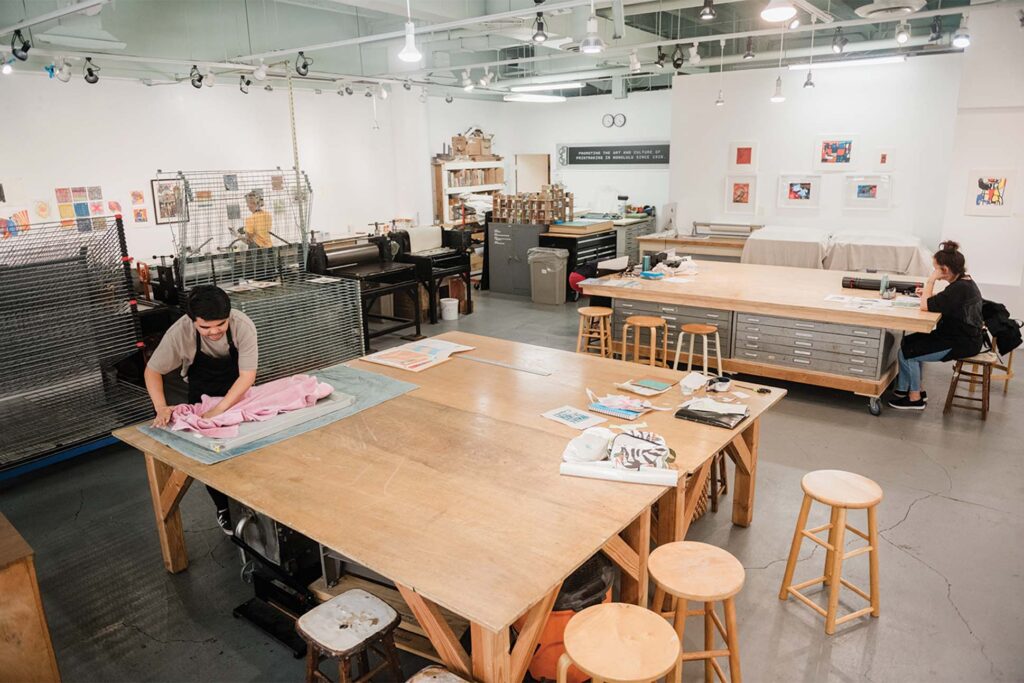
The studio also hosts public classes in mokuhanga (Japanese woodblock printing), Native Hawaiian kapa making, and more. Six exhibitions are hosted in the space each year, including the organization’s renowned annual juried exhibition. Winning artists receive prize money or purchase recommendations for the Art in Public Places collection of the Hawaiʻi State Foundation on Culture and the Arts, a “catalyst to keep moving their art forward,” Karabinus says. “You’re really a part of something much bigger when you’re a Honolulu printmaker.”

